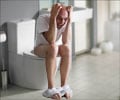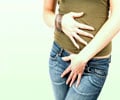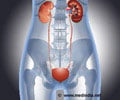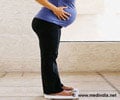- Urinary Incontinence in Women - (https://www.hopkinsmedicine.org/health/conditions-and-diseases/urinary-incontinence/urinary-incontinence-in-women)
- Urinary incontinence - (https://www.mayoclinic.org/diseases-conditions/urinary-incontinence/symptoms-causes/syc-20352808 )
- Urinary Incontinence - (https://my.clevelandclinic.org/health/diseases/17596-urinary-incontinence)
- Definition & Facts for Bladder Control Problems (Urinary Incontinence) - (https://www.niddk.nih.gov/health-information/urologic-diseases/bladder-control-problems/definition-facts)
- Urinary Incontinence in Women - (https://www.hopkinsmedicine.org/health/conditions-and-diseases/urinary-incontinence/urinary-incontinence-in-women)
- Symptoms & Causes of Bladder Control Problems (Urinary Incontinence) - (https://www.niddk.nih.gov/health-information/urologic-diseases/bladder-control-problems/symptoms-causes)
- Physiotherapy assessment for female urinary incontinence - (https://pmc.ncbi.nlm.nih.gov/articles/PMC7210229/)
- Role of Incontinence Severity Index in Evaluating Severity and Impact of Treatment Of Stress Urinary Incontinence - (https://pmc.ncbi.nlm.nih.gov/articles/PMC9583369/)
- The Questionnaire for Urinary Incontinence Diagnosis (QUID): Validity and Responsiveness to Change in Women Undergoing Non-Surgical Therapies for Treatment of Stress Predominant Urinary Incontinence - (https://pmc.ncbi.nlm.nih.gov/articles/PMC2891326/)
- Urinary Incontinence - (https://www.ncbi.nlm.nih.gov/books/NBK559095/)
- 10 ways to stop leaks -Urinary incontinence - (https://www.nhs.uk/conditions/urinary-incontinence/10-ways-to-stop-leaks/)
- Living with Weak Bladder & Leakage - (https://www.depend.co.nz/advice-and-support/living-with-incontinence/bladder-leakage)
- Giggle incontinence: A rare condition with a successful management - (https://www.sciencedirect.com/science/article/pii/S2214442022000456)
- Obesity and Urinary Incontinence: Epidemiology and Clinical Research Update - (https://pmc.ncbi.nlm.nih.gov/articles/PMC2866035/)
- Urinary Incontinence in Women - (https://www.hopkinsmedicine.org/health/conditions-and-diseases/urinary-incontinence/urinary-incontinence-in-women)
Worried about urinary leakage or bladder control issues? You’re not alone-1 in 8 women experience some form of urinary incontinence, yet many suffer silently due to embarrassment or lack of awareness.
This free Women’s Urine Leakage Calculator helps you assess whether your symptoms may require medical attention or if they can be managed with lifestyle changes and pelvic floor exercises. Developed by the Medindia content team and reviewed by urology experts, this tool offers a simple and private way to take the first step toward improving your bladder health and quality of life.Leakage index developed by Bo can be used to evaluate what physical activities can serve as a trigger for urinary leakage in a woman with urinary stress incontinence. The study was conducted in Oslo, Norway. - Ref. Scand J Urol Nephrol
What is urinary incontinence?
Urinary incontinence (UI) is the unintentional loss of urine. According to the National Association for Continence, over 25 million adult Americans experience temporary or chronic urinary incontinence. UI can occur at any age, but it is more common among women over 50. Urine leakage in women may be a temporary condition that results from an underlying medical condition. It can range from the discomfort of slight losses of urine to severe, frequent wetting (1✔).
Causes and Risk Factors of Urinary Incontinence
Urinary incontinence is not an inevitable result of aging, but it is common in older people due to specific changes in body function caused by diseases, medications, or the onset of an illness. Urinary incontinence treatment in elderly females often focuses on managing the condition without limiting daily activities.
Sometimes, it is the first and only symptom of a urinary tract infection (UTI). In women, urinary incontinence causes may include pregnancy, childbirth, and hormonal changes related to menopause. A sudden urge to pee and inability to hold it can also be an early sign of incontinence or related conditions.
Incontinence can happen to anyone, but it is more common in women due to factors like pregnancy, childbirth, and menopause. Pregnancy may cause short-term incontinence, which often improves after childbirth. However, some women experience incontinence post-delivery due to weakened pelvic floor muscles, increasing the likelihood of leakage. During menopause, hormonal shifts, especially decreased estrogen levels, can alter bladder control, leading to incontinence.
Female urinary incontinence at night, known as nocturia, can disrupt sleep and may require specific treatments such as lifestyle adjustments and medications. Additionally, aging weakens the muscles supporting pelvic organs, increasing the risk of leakage
Different types of urinary incontinence
- Urgency incontinence (This is the inability to hold urine long enough to reach a restroom)
- Stress incontinence (Urine drops after urination female could be an indicator of this condition)
- Functional incontinence (urine leakage due to physical conditions)
- Overflow incontinence (quantity of urine produced exceeds the bladder’s capacity to hold it)(2✔)
Symptoms of urinary incontinence
The following are common symptoms of urinary incontinence. However, each individual may experience symptoms differently. Symptoms may include:
- Needing to rush to the restroom and/or losing urine if you do not get to the restroom in time
- Urine leakage with movements or exercise
- Leakage of urine that prevents activities
- Urine leakage with coughing, sneezing, or laughing
- Leakage of urine that began or continued after surgery
- Leakage of urine that causes embarrassment
- Constant feeling of wetness without sensation of urine leakage
- Feeling of incomplete bladder emptying
How is urinary incontinence diagnosed?
For people with urinary incontinence, it is important to consult a healthcare provider. In many cases, patients will then be referred to an urogynecologist or urologist, a doctor who specializes in diseases of the urinary tract. Urinary incontinence screening questions may be asked, and urinary incontinence screening tool or urinary incontinence algorithm may be used to determine the cause and diagnosis. Urinary incontinence is diagnosed with a complete physical examination that focuses on the urinary and nervous systems, reproductive organs, and urine samples.
Urinary incontinence treatment
Specific treatment for urinary incontinence will be determined based on the individual. Treatments may include (3✔):
Behavioral therapies:
- Bladder training
- Toileting assistance
- Diet modifications
- Pelvic muscle rehabilitation (to improve pelvic muscle tone and prevent leakage):
- Kegel exercises
- Biofeedback
- Vaginal weight training
- Pelvic floor electrical stimulation
Medications:
- Anticholinergic medications
- Vaginal estrogen
- Pessary (small rubber device that is worn inside the vagina to prevent leakage)
Office procedure:
- Botox injections into the bladder
- Urethral bulking agents
- Peripheral nerve stimulation
Surgery:
- Slings (may be made from synthetic mesh or from your own tissue)
- Bladder suspension
- Peripheral nerve stimulation
FAQs
1. What is bladder leakage a sign of?
Bladder leakage may be a sign of urinary incontinence, which can result from several conditions. It can be a sign of stress incontinence, overactive bladder, or an infection. It may also indicate changes such as hormonal imbalances during menopause, pregnancy, or after childbirth (4✔).
2. What causes urine incontinence in females?
Urine leakage in females can be caused by stress incontinence (pressure on the bladder), urge incontinence (sudden, intense urge to urinate), or overflow incontinence (bladder unable to empty fully). Pregnancy, childbirth, hormonal changes, and aging can contribute to this issue.
3. Is urine leakage a serious problem?
No, urine leakage (also known as urinary incontinence) is generally not considered a life-threatening problem, but it can significantly impact your quality of life and may signal an underlying health concern, so seeking medical advice for proper management is important (5✔).
4. What is the best treatment for female urinary incontinence?
The "best" treatment for female urinary incontinence often depends on the type and severity of incontinence, but typically involves non-surgical options like pelvic floor muscle exercises (Kegels), bladder training, lifestyle modifications, and in some cases, medication; for severe cases, surgery like a sling procedure might be recommended, particularly for stress incontinence.
5. What medication is used for incontinence in women?
Common medications used for incontinence in women include anticholinergics, mirabegron, and topical estrogen. Anticholinergics such as oxybutynin work by blocking the action of acetylcholine, a chemical that triggers involuntary bladder contractions, thereby reducing symptoms of urgency and frequency in overactive bladder.
Mirabegron is a beta-3 adrenergic agonist that relaxes the bladder muscle, increasing its storage capacity and decreasing the urge to urinate frequently. Topical estrogen, applied as a cream, ring, or patch, helps improve the strength and elasticity of the tissues around the urethra and bladder, particularly in postmenopausal women, enhancing bladder control and reducing incontinence episodes.
6. What are the first signs of urinary incontinence?
The first sign of urinary incontinence is usually uncontrollable urine leakage. This can include leaking urine during everyday activities or when you feel a sudden urge to urinate (6✔).
7. How do you assess for urinary incontinence in women?
To assess for urinary incontinence in women, a healthcare provider will typically conduct a detailed medical history, perform a physical examination including a pelvic exam, and may order additional tests like a urine sample (urinalysis), a bladder diary, and in some cases, urodynamic testing to determine the type and severity of incontinence, and identify potential causes; this may include a "cough test" during the pelvic exam to check for urine leakage when applying pressure by coughing or straining (7✔).
8. What is a incontinence severity index (ISI) and how to score a urinary incontinence questionnaire?
An incontinence severity index (ISI) is a simple questionnaire used to assess the severity of urinary incontinence by asking patients about the frequency and amount of urine leakage they experience (8✔).
To score a urinary incontinence questionnaire, each question is assigned a point value based on the severity of the response (never to always), and the total score is calculated by summing up the points from all questions; higher scores generally indicate greater severity of urinary incontinence (9✔).
9. What is the rate of incontinence in women?
According to most studies, the rate of urinary incontinence in women is around 25-45%, with the prevalence significantly increasing with age (10✔).
10. Am I leaking urine or discharge?
It is important to distinguish between urine leakage in women and vaginal discharge. If you notice urine leakage, especially after activities like sneezing or laughing, this may be a sign of stress incontinence. If the fluid is thick and clear, it could be vaginal discharge. Urinary incontinence in 20-year-old female may sometimes be related to different causes, such as hormonal changes, and should be evaluated by a healthcare provider.
11. How to stop male urine leakage?
Male urine leakage, also known as urinary incontinence, can be treated with lifestyle changes, pelvic floor exercises, and bladder training (11✔).

 Email
Email

















i was wondering how many protection underwear I will have to use a day to make sure i dont leak threw my clothes?